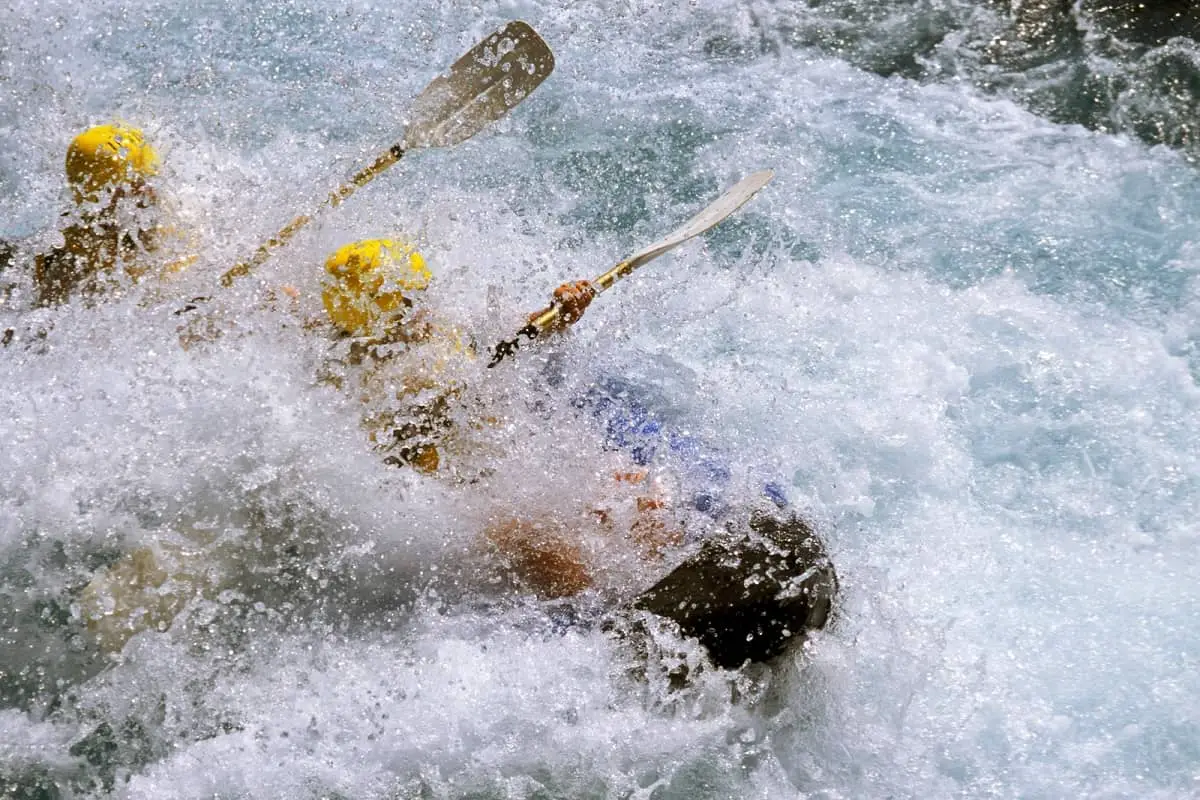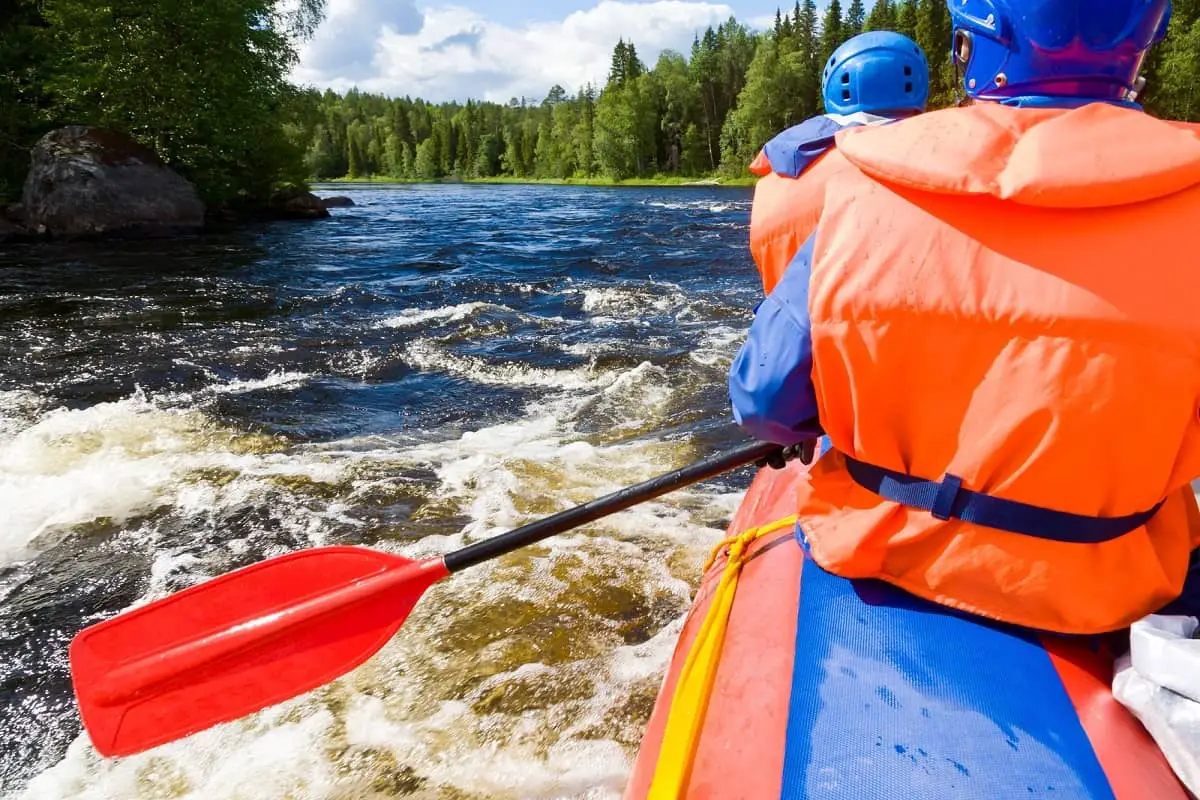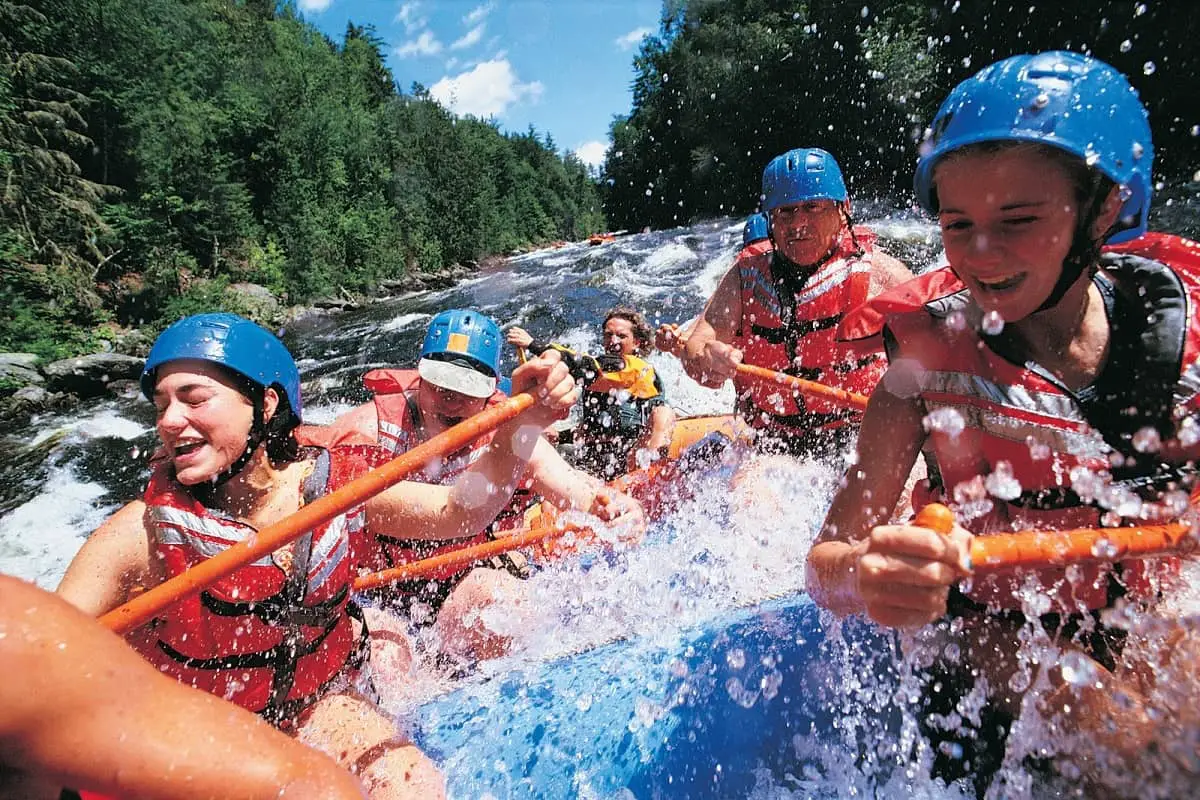Can You Use a Bike Helmet for Kayaking?
If you are new to kayaking or other water sports, you may be wondering whether you can use your spare bicycle helmet instead of buying a proper kayaking helmet.
After all, a helmet is a helmet, right?
Well, actually, yes they are both helmets, but they’re designed for completely different uses. So, the answer to ‘can you use a bike helmet for kayaking’ is an emphatic ‘No’.
Anyways, kayaking helmets and bike helmets are tested and certified for completely different usage situations.
Page Content

Disclosure: As an Avantlink and Amazon Associate, we earn from qualifying purchases. Disclosure Statement.
Can You Use a Bike Helmet for Kayaking?
The composition, shape, and coverage of bike helmets and kayaking helmets are too dissimilar for a bike helmet to effectively protect your head while kayaking. So, No! You should not use a bike helmet for kayaking.
If you decide to wear a bike helmet while kayaking, you could sustain a serious injury. It is always worth spending a little more to protect your head, especially when starting a new hobby such as kayaking or white-water rafting. To help you understand why, we’ve compiled a few facts about what makes these two helmets different.
Consider the risks of kayaking versus the risks of cycling. While both sports could potentially lead to a serious head injury, the nature of the injuries is completely different. Therefore, both types of helmets are designed to protect their wearers from the specific types of trauma the athlete could receive while engaged in that sport/activity.
RELATED: 6 Best Helmets for Water Sports
Consider a cyclist. If someone sustains a head injury while riding a bike, it’s most likely caused by falling sideways or backward onto the pavement. Even if the cyclist is traveling at a high speed, their bike helmet is designed to absorb a single blow and allow the cyclist to slide along the pavement without scraping their head. After an accident, the helmet should then be replaced.
Kayaking helmets have a uniquely different job. Kayakers, and especially white-water rafters, have to be wary of several risks:
- Rocks falling from the top of a cliff
- Low-hanging tree branches
- Submerged rocks and other hazards in the water
- Thrashing rapids
If a kayaker falls overboard while paddling through fast rapids, they could hit their head or neck on several rocks before gaining control of their body. Even without falling into the water, kayakers are still at risk of paddling into a dangerous environment.

Kayaking helmets must be prepared to take repeated blows from multiple directions. For this reason, kayaking helmets are generally tougher than standard bike helmets and are certified safe under CE EN1385 standards due to a lack of similar standards in the United States.
Different Conditions
To keep kayakers safe from the variety of hazards they face, kayaking helmets are designed to cover more surface area than a bicycle helmet. Whereas a bicycle helmet covers the side and crown of your head, your forehead, and some of the back of your head, a kayaking helmet is far more comprehensive.
Water Sports helmets come down over the ears and cover more of the forehead. Many helmets even extend down to cover the back of the neck, while some white-water rafting helmets even include a visor and chin guard to help protect your face. This way, nothing can impact your head while you paddle your kayak or if you fall into the water.
Certified Kayaking Helmets
Before a kayaking helmet ever goes to market, it first has to be tested to guarantee that whoever buys it is safely protected. This testing process is done independently and involves subjecting the helmet to various impacts and strength tests.
When a helmet company releases a new model, they are required to send samples to a testing lab where the helmet is tested for a few key components:
- How much impact the helmet can sustain?
- Retention testing of the helmet’s chin strip?
- Will the helmet stay on during/after a fall?
Researchers mount the helmet to a model weighted to match a typical human’s head. They then drop the helmet from several different heights onto a variety of metal anvils. If the helmets register above a certain g-force when they make an impact, they fail the test and are deemed unsafe for human use.

Kayaking helmets are also exposed to environmental conditions similar to those that a kayaker would face. They are soaked in water and then tested repeatedly to show that the helmet retains its effectiveness even after prolonged use on a river, lake, or stream.
If they deteriorate because of water exposure, the helmet will also fail the test.
This content was originally published on headsdontbounce.com. If it appears on another website, it is a violation of the copyright owned by headsdontbounce.com.
Conclusion
Avoid using a bike helmet for kayaking. If you are new to kayaking or white-water rafting, it is better to spend the money on a quality kayaking helmet. They are designed specifically to handle the hazards you could face while kayaking and will protect your head far more than a helmet designed for a different sport.
It’s also worth noting that many river-related fatalities are due to drowning after being knocked unconscious from hitting a rock. Certainly much better to wear the right helmet for the task at hand.
Related Reads:
